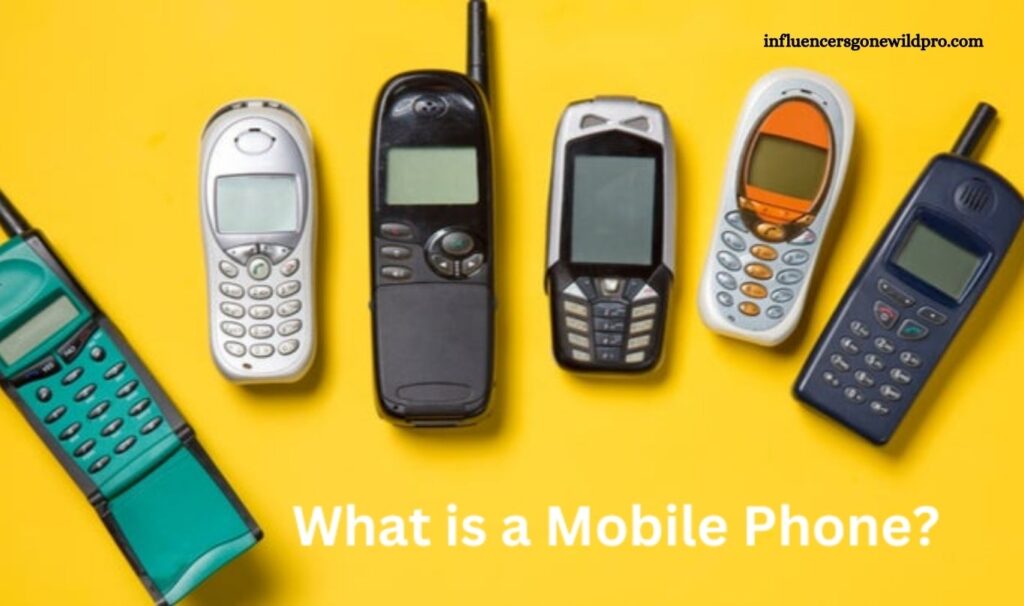A mobile phone, commonly known as a cell phone or smartphone, is a portable communication device that allows users to make and receive calls through radio frequency signals. This versatile gadget has evolved far beyond its original function, incorporating features such as text messaging, internet browsing, multimedia capabilities, and access to various apps. Often referred to by different names, including handphone or cellular phone, the mobile phone has become an indispensable tool for modern living.
With its constant advancements in technology, it continues to play a crucial role in personal and professional communication, connecting people globally in real time. Its integration into daily life has made it not only a communication device but also a multi-functional hub for entertainment, work, and social interaction.
Read More: Essential Accessories for MSI Gaming Laptops
Cell phones
Cell phones operate within cellular networks that are structured as distinct systems interconnected through radio waves. These networks, managed by carriers, utilize transmitters and switches to facilitate communication. The network infrastructure can either be analog or digital, with many modern handheld cell phones featuring built-in serial interfaces, allowing them to function similarly to data modems. Most cell phones utilize the widely adopted Hayes AT command set, which enables them to interface with other devices or systems. When a phone enters a new network area, it typically switches to a compatible system to maintain connectivity.
Initially, cell phones operated on analog technology, using the 824 megahertz radio spectrum under the AMPS (Advanced Mobile Phone Service) standard. In the early 1980s, the U.S. government mandated that two carriers be assigned to each market, with these carriers usually being local exchange providers.
PDAs
The Personal Digital Assistant (PDA) market has evolved significantly over the years, incorporating a variety of advanced features. Many modern PDAs are equipped with Bluetooth, WiFi, and infrared ports, allowing for seamless connectivity. Some models also provide direct email access and GPS functionality, with certain devices even including SIM cards, enabling them to function as mobile phones.
PDAs are designed to store large amounts of data, often with expandable memory through memory cards. These cards can also house multimedia files, offering users the ability to store and view video recordings or connect to external devices like projectors and televisions via dedicated ports. Additionally, users can download movies or browse their music libraries directly from the device.
While smartphones offer many similar features, PDAs tend to be more cost-effective over time. Although the initial purchase price of a smartphone may be lower, ongoing wireless data plans can make smartphones more expensive in the long run. In comparison, opting for a $300 PDA instead of a $150 smartphone could save users up to $60 per month. PDAs also offer larger screens, which can be advantageous for tasks such as document viewing, and tend to vary in terms of memory capacity and processing power.
Smartwatches
Smartwatches have become an increasingly popular way to stay connected while on the move. These wearable devices offer a variety of functions, including the ability to send and receive text messages and phone calls. They can even help locate your phone if it’s misplaced. Leading models, such as the Apple Watch and Samsung Galaxy Gear, have gained significant attention for their innovative features and integration with smartphones.
While the concept of a smartwatch has been explored for many years, it has only recently started to gain widespread popularity. Motorola Mobility’s CEO, Dennis Woodside, confirmed in a December 2013 interview that the company was actively developing its own smartwatch, acknowledging the unique challenges associated with creating wrist-worn technology.
Smartwatches are also a powerful tool for health and fitness monitoring. For example, the Apple Watch tracks key metrics such as sleep patterns and stress levels, and even features fall detection that can alert emergency contacts if needed. Additionally, it is compatible with both Android and iOS devices, making it a versatile option for users seeking to stay on top of their health and wellness.
Other portable devices
Other portable devices are compact electronic gadgets designed for easy mobility, typically powered by batteries, and primarily used for personal computing. These devices often include additional features such as cameras, GPS capabilities, and built-in wireless Internet connectivity, making them increasingly popular in both business and personal settings.
Among the range of portable devices are PDAs, smartphones, laptops, walkie-talkies, and portable handheld CB radios. PDAs, which offer many of the same functionalities as laptops, enable users to browse the Internet, send emails, and engage in instant messaging. Smartphones, essentially advanced cell phones, integrate a variety of PDA features, offering similar capabilities with added functions such as touchscreens, app stores, and more. Both types of devices can run many of the same applications, providing users with a wide array of tools for work, communication, and entertainment.
Cell towers
Cell towers play a crucial role in mobile communication, providing the infrastructure needed to transmit signals between cell phones and the network. To find the location of a nearby cell tower, you can use your phone’s signal strength indicator, which displays the signal’s strength in decibels (dB). Signal strength typically ranges from -50 dB (strongest) to 120 dB (weakest). If you’re near a tower, your signal will be stronger, while a weaker signal indicates greater distance from the tower.
Cell towers are operated by mobile carriers to relay signals to and from their customers’ devices. However, the tower you connect to depends on your carrier; for example, a Verizon user won’t connect to an AT&T tower unless roaming. It’s important to note that in emergency situations, your cell phone can access any available tower, regardless of the carrier, ensuring you can make emergency calls even if you’re outside your usual network’s coverage area.
Frequently Asked Questions
What is a cell tower?
A cell tower is a structure used by mobile phone carriers to transmit signals to and from mobile devices. It serves as a key component of the cellular network, enabling communication through radio frequencies.
How do I know which cell tower I’m connected to?
Most mobile phones display signal strength in decibels (dB), which can help you determine your proximity to a cell tower. The stronger the signal (closer to -50 dB), the nearer you are to the tower.
Can my phone connect to any cell tower?
In general, your phone connects to a tower operated by your specific carrier. However, in emergency situations, your phone can connect to any available tower, regardless of the carrier, to ensure you can make emergency calls.
How do cell towers help with emergency calls?
Cell towers are essential for transmitting emergency calls. If you’re in an area with no signal from your regular carrier’s tower, your phone can still connect to another carrier’s tower to place an emergency call.
Can a weak signal affect my call quality?
Yes, a weak signal from a distant or congested tower can result in poor call quality, dropped calls, or slow data speeds. Being closer to a tower or moving to an area with better coverage can improve your connection.
Do all cell towers operate on the same frequencies?
No, different mobile carriers may use different frequencies or bands. Each carrier has its own set of frequencies for communication, which is why you may not be able to use another carrier’s tower for regular calls unless it’s an emergency.
Conclusion
cell towers are fundamental to the functioning of mobile communication networks, enabling users to stay connected through voice calls, text messages, and data services. Understanding how they work, including signal strength, coverage, and emergency services, helps users make informed decisions about their mobile usage.


